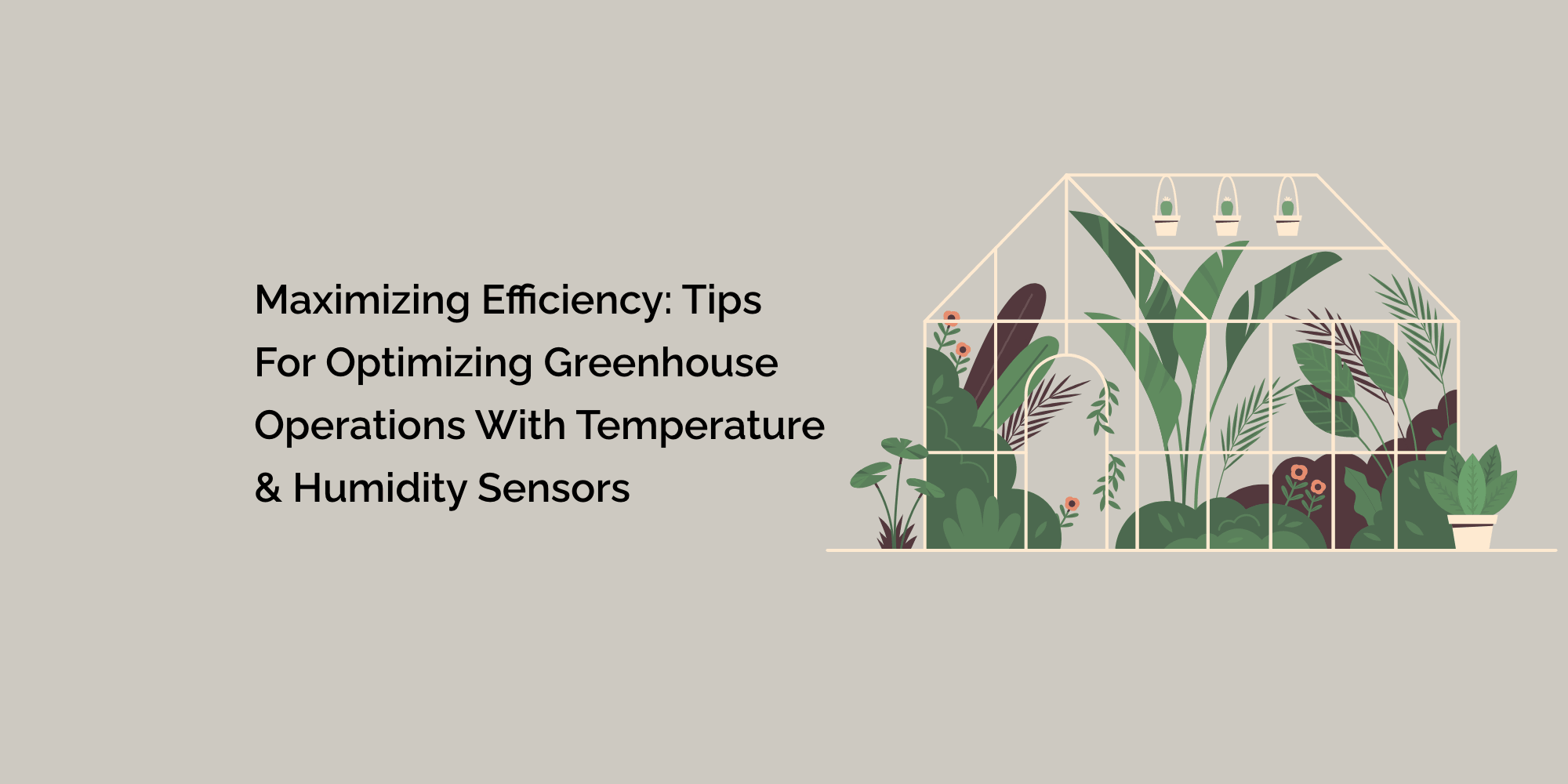Greenhouses are vital in modern agriculture, allowing for year-round cultivation and optimal plant growth. Maintaining optimal temperature and humidity levels is crucial to ensure the success of greenhouse operations. This blog will explore the importance of temperature and humidity monitoring in greenhouse operations and discuss how integrating temperature and humidity sensors can maximize efficiency and productivity. We will provide valuable tips on utilizing these sensors effectively to create the ideal environment for plant growth. By implementing the correct monitoring systems and leveraging sensor data, greenhouse operators can optimize conditions, reduce energy costs, prevent crop diseases, and ultimately enhance their product's overall yield and quality.
The Importance of Temperature and Humidity in Greenhouse Operations
-
Optimal Temperature Range: Different plants thrive within specific temperatures, and maintaining the right temperature is essential for their growth, photosynthesis, and metabolic processes. Proper temperature control influences seed germination, flowering, and fruit development.
-
Humidity Regulation: Controlling humidity levels in the greenhouse is crucial for preventing excessive moisture buildup, condensation, and the spread of fungal diseases. It also influences transpiration rates and water absorption by plants.
- Impact on Crop Health and Yield: Imbalances in temperature and humidity can stress plants, making them more susceptible to diseases, pests, and reduced productivity. Maintaining optimal conditions promotes vigorous growth, enhances nutrient absorption, and increases crop yields.
The Role of Temperature and Humidity Sensors in Greenhouse Operations
-
Real-time Monitoring: Temperature and humidity sensors provide continuous, accurate, and real-time data on environmental conditions within the greenhouse. This data allows operators to make informed decisions and implement timely adjustments to optimize growing conditions.
-
Automated Control Systems: Integrating sensors with mechanical control systems enables the adjustment of ventilation, heating, cooling, and irrigation systems based on sensor readings. This ensures precise and efficient management of temperature and humidity levels.
- Preventive Measures: Early detection of deviations from optimal conditions through sensor data alerts greenhouse operators to potential issues. Prompt corrective actions can be taken, preventing crop damage and minimizing losses.
Tips for Optimizing Greenhouse Operations with Temperature and Humidity Sensors
-
Strategic Sensor Placement: Place sensors strategically to capture accurate readings representative of the greenhouse's conditions. Consider positioning sensors at different heights, near plants, and areas prone to temperature or humidity fluctuations.
-
Calibration and Maintenance: Regularly calibrate sensors to ensure accurate measurements. Perform routine maintenance to clean and inspect detectors, ensuring their optimal performance.
-
Data Analysis and Interpretation: Analyze sensor data to identify patterns, trends, and potential issues. Look for correlations between temperature, humidity, and plant growth stages to optimize conditions for different crops.
-
Automation and Control: Integrate sensors with automated control systems to streamline temperature and humidity regulation. Set appropriate thresholds and triggers for system adjustments based on sensor readings.
- Alert Systems and Notifications: Implement alert systems that notify greenhouse operators of critical deviations from desired temperature and humidity levels. Configure notifications through email or mobile devices to ensure timely responses to changes.
Energy Efficiency and Sustainability
-
Efficient Heating and Cooling: Use temperature sensors to regulate heating and cooling systems efficiently. Set temperature thresholds that balance energy consumption with plant requirements, ensuring a comfortable and energy-efficient environment.
-
Water Management: Humidity sensors can help optimize irrigation systems, ensuring plants receive the right amount of moisture while avoiding excessive water usage and runoff.
- Renewable Energy Integration: Consider utilizing renewable energy sources, such as solar panels or wind turbines, to power greenhouse operations. This reduces reliance on traditional energy sources and promotes sustainability.
Certainly! Here are some frequently asked questions (FAQs) related to optimizing greenhouse operations with temperature and humidity sensors:
Why are temperature and humidity important in greenhouse operations?
Temperature and humidity play a crucial role in plant growth and development. Optimal temperature ranges promote photosynthesis, metabolic processes, and overall plant health. Controlling humidity levels prevents moisture-related issues, fungal diseases, and plant stress.
What are temperature and humidity sensors, and how do they work?
Temperature and humidity sensors measure and monitor the respective environmental conditions. They utilize various technologies, such as thermistors and capacitive sensors, to detect and convert temperature and humidity into electrical signals for accurate readings.
How do temperature and humidity sensors optimize greenhouse operations?
By providing real-time data, temperature, and humidity sensors enable greenhouse operators to monitor and adjust environmental conditions accordingly. This optimization leads to enhanced plant growth, improved crop yields, and the prevention of diseases caused by imbalances in temperature and humidity.
Conclusion
Temperature and humidity sensors are vital in maximizing efficiency and optimizing greenhouse operations. By monitoring and controlling these environmental factors, greenhouse operators can create the ideal conditions for plant growth, prevent crop diseases, and improve overall yields. Integrating sensors with automated control systems enable real-time adjustments and ensures proactive management. Analyzing sensor data, strategically placing sensors, and implementing alert procedures further, enhance the effectiveness of temperature and humidity monitoring. Energy efficiency and sustainability can be achieved by leveraging sensor data for efficient heating, cooling, and water management and integrating renewable energy sources. By embracing these tips and utilizing temperature and humidity sensors effectively, greenhouse operators can maximize efficiency, reduce costs, and contribute to sustainable agricultural practices.








